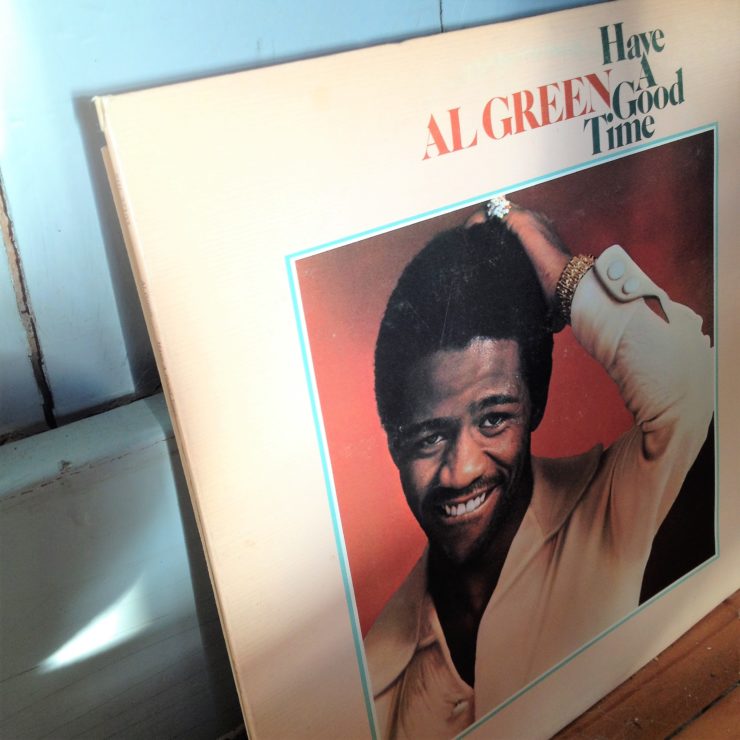
Just in time for the weekend, here’s a little list of some of the things I’ve been listening to and reading this week, some of it online — Storyboard included, natch — and some of it on vinyl or actual ink and paper.
Two of my biggest loves are narrative journalism and music, and I’m lucky that my days are filled with both. When reading stories, I get inspired by songs I think fit the article’s theme — a soundtrack. To start out, here are a couple of this week’s Storyboard articles, and their soundtracks:

In this 1959 photo, Fidel Castro, then a guerrilla leader, does some reading while at his rebel base in Cuba's Sierra Maestra mountains.
Why’s This So Good? Fidel Castro and the art of the obit. The deck hed says it all: A roundup of some of the top obituaries reveals the craft involved (and, in the case of the long-lived Cuban leader, the endless updating and rewriting). I used to work on the foreign desk of the Los Angeles Times, and the Fidel obit was my constant companion through the years, so much so that I gave it a nickname: Bane of Existence. I suspect it was the same for journalists at newspapers the world over. (I loved the photo that made the rounds on Twitter this week of a proof of the New York Times’ obit from 1971, found in the paper’s morgue.) It was fascinating how a couple of the obits seemed to be making unintended comparisons to Donald Trump in discussing Castro’s genius at manipulation. And I had to use this picture, out of the thousands available: Castro reading a newspaper!
The soundtrack: “Chan Chan,” by Buena Vista Social Club. I know it became a bit unhip to like this Cuban band after their album became the dinner party soundtrack for well-off liberals, but the opening chords of this song — slightly spooky, slightly mournful — will always move me. Plus, that syncopation when they first sing the words Chan Chan, like biting off the end of a cigar. And the moment the horns come in when the song is already half over! Lovely.

Residents look at the crime scene below where Jessica White was shot to death.
Two top New York Times editors talk about the yearlong project “Murder in the 4-0.” It feels a bit like that like Springsteen lyric about “boring stories of your glory days,” but I’m going to mention the L.A. Times again. Its Homicide Report is a true public service, providing “a story for every name” of someone killed in Los Angeles County. And now The New York Times has combined public service with narrative in its yearlong project to write a longform piece for every murder in the city’s 40th Precinct. I talked with City Editor Henri Cauvin, who’s overseeing the “Murder in the 4-0” project, and Metro Editor Wendell Jamieson about the origins of the series, and what they hope to achieve with it. This is a great line from Henri: “We have tried to make each story unique, and the reality is that if you dig deeply enough, just about every murder is its own powerful story.”
The soundtrack: “Welcome to the Terrordome,” by Public Enemy. They may not be a Bronx band, but it’s hard to beat Public Enemy when it comes to summoning the experience of growing up black in New York. The lyrics to this song blow my mind, they’re so intricate and powerful. You know how some songs are poetry? This is one of them.

Deryl Dedmon was convicted in the June 2011 death of ames Craig Anderson in Jackson, Miss.
BuzzFeed News’ Albert Samaha and a modern-day lynching in Mississippi. This is another post in our series from Missouri School of Journalism students called “Tomorrow’s journalists exploring the masters of today.” It’s been fascinating to see what source the students are choosing. Surprisingly, many picked stories from The Atlantic; I suppose I’m surprised because it seems so old school, a magazine that’s been around for decades. Others have chosen podcasts, and in this post, Taylor Wanbaugh chose a story from BuzzFeed News, which is making a name for itself outside the listicles that crowd the site like clickbait candy. The flourishing of new outlets for longform is heartening, as is this next generation of journalists.
The soundtrack: “Strange Fruit,” by Nina Simone. Billie Holiday does the most famous version of this stunning song, but it is Nina Simone’s version that I always gravitate toward. Her voice so pained and angry at the same time, like the horn of a train as it races through the southern landscape, her piano chords so simple, a kind of Greek chorus reinforcing her words. I already talked about songs as poetry; this song actually started as one.
What I’m reading online: This week, a Trump ally asserted that there is no longer such a thing as facts. So it seemed a good time to read Truther Love: Uncovering the dating habits of conspiracy theorists and the challenges they face,” by Sabine Heinlein for Longreads. She raises a clever point — if love is about trust, how do people who are consumed by a lack of trust manage to do it? Heinlein faces a difficult balance: showing the absurdity of some of their beliefs without mocking them. Often she just lets them talk, like this quote:
“Truthers really have a hard time right now,” Lorraine continues, “because they have to accomplish a few things: they feel like everything is coming to an end soon, and that the truth is going to be revealed soon. So they are feeling this urgency. And they really want to find a partner to not be alone in this. It would make the journey obviously more enjoyable for them.”
 What’s on my bedside table: “My Family and Other Animals,” by Gerald Durrell. It seems like everyone’s writing memoirs these days, so if you’re one of the million or so planning yours, please read this book to see how it’s done right. It’s full of beautiful descriptions and hilarious scenes, but what it captures best is dialogue. Would that all of our families were as witty as the Durrells. I want to move to Corfu circa 1935 and hang out with them! Here’s a little sample, when a boorish boyfriend of the daughter is having tea with the family:
What’s on my bedside table: “My Family and Other Animals,” by Gerald Durrell. It seems like everyone’s writing memoirs these days, so if you’re one of the million or so planning yours, please read this book to see how it’s done right. It’s full of beautiful descriptions and hilarious scenes, but what it captures best is dialogue. Would that all of our families were as witty as the Durrells. I want to move to Corfu circa 1935 and hang out with them! Here’s a little sample, when a boorish boyfriend of the daughter is having tea with the family:
There was another short silence, during which we all sat and watched Mother pouring out the tea and searching her mind desperately for a topic of conversation. At length the Turk turned to Larry. “You write, I believe?” he said with a complete lack of interest. Larry’s eyes glittered. Mother, seeing the danger signs, rushed in quickly before he could reply. “Yes, yes,” she smiled, “he writes away, day after day. Always tapping at the typewriter.” “I always feel that I could write superbly if I tried,” remarked the Turk. “Really, said Mother. “Yes, well, it’s a gift, I suppose, like so many things.”
What’s on my turntable: Although I spend most of my time listening to music on Spotify, sometimes I want to hear the needle touching down on vinyl. This week’s vinyl: “Have a Good Time,” by Al Green. With all the stories about death this week, it was time for a little feel-good Al Green. Feeling down? Listen to the second song on the album, “Smile a Little More.” It’s like happiness on vinyl. How his voice can soar so sweetly from a growl to this tea-kettle-boiling “eeee!” Bonus: On the back of the album, it gives the address to his fan club (make that International Fan Club) in Memphis. I feel like writing a mash note and seeing if it’s delivered.
If you want to chat about storytelling (or music), you can reach me at editor@niemanstoryboard.org. Or you can find me at @karihow on Twitter.


